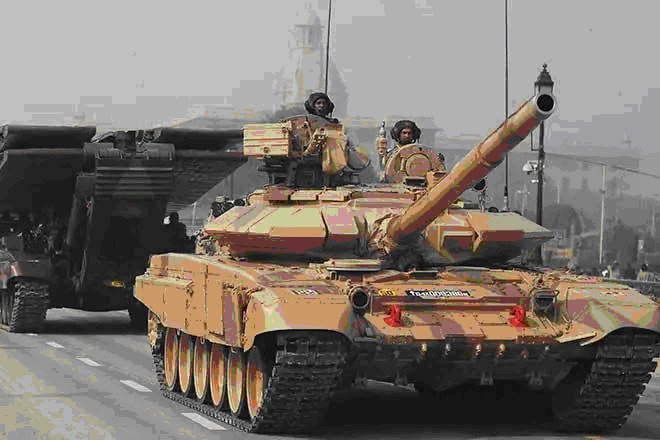Modern Warfare: Hi-Tech Weapons Cannot Replace Tanks And Fighter Jets, Says Expert
March 5, 2020
Speaking at a seminar ‘Changing characteristics of land warfare and its impact on the military’ organised by the Centre for Land Warfare Studies, Chief of the Army Staff Gen Manoj Naravane referred to the Balakot airstrike as an example of how to manage the military escalation skilfully. With the 20th-century icons like the Main Battle Tanks and the fighters gradually on their way out in the future wars, the Indian Army is looking at new technologies like laser and directed energy weapons.
With the geo-strategic realities changing without a single shot being fire is indicative of the changing nature of warfare. However, it is not possible to wish away Main Battle Tanks and fighter aircraft cannot be ruled out totally, says an expert.
Speaking at a seminar ‘Changing characteristics of land warfare and its impact on the military’ organised by the Centre for Land Warfare Studies, Chief of the Army Staff Gen Manoj Naravane referred to the Balakot airstrike as an example of how to manage the military escalation skilfully. He also cited China’s island reclamation in the South China Sea as a prime example where there was not a single bullet fired.
Sharing his views Lt Col Manoj K Channan (Retd) with FE Online, says, “The Chinese Defence Forces have undergone a major modernisation programme to be able to make its presence felt like part of China’s efforts to challenge the unipolar leadership role of the US. No professional army should be discounted its fighting capability. It’s true that the Chinese Defence Forces have no combat experience.”
“They however, sent a Special Forces unit “The Night Tigers” to Syria for combat exposure fighting the Uyghur’s in end of 2017. In comparison the Indian Army is combat-hardened as officers, junior commissioned officer’s and other ranks get rotated in Rashtriya Rifles / Assam Rifles in counter-terror operations,” Channan adds.
As learnt from a former GOC 5 Mountain Division, the Chinese are great at building up infrastructure overnight; however, his observations on the average Chinese combatant is the average “Joe” and is no way superior to our troops.
Referring to the Houthi rebels on Riyadh airport and oil facilities in Saudi Arabia and the Balakot airstrike by the Indian Air Force, the army chief had also talked about the importance of dynamic responses which are below the threshold of an all-out war.
New Technologies For The Indian Army
With the 20th-century icons like the Main Battle Tanks and the fighters gradually on their way out in the future wars, the Indian Army is looking at new technologies like laser and directed energy weapons.
According to Channan, “The comments made by the Chief of the Army Staff Gen MM Naravane reflect the forward-thinking General that he is, however, one must yet at the same time not be divorced by the realities on the ground. While we need to step up the research and development towards blockchain and artificial intelligence direct energy weapons, swarm drones and so on we need to make up the real-time shortages in terms of the leadership at the unit/subunit level; deficiencies in terms of arms and ammunition which are the bare essentials and the ability to win battles.”
“The Main Battle Tank cannot be written off or wished away; modern armies are redesigning their tanks to meet the challenges of fighting in built-up areas as is seen in the Middle East and other flashpoints globally. The tenets of manoeuvre warfare come into play in the modern-day battlefield; the ability to build overwhelming superiority thus beating the enemy in time and space. The Indian Defence Services should be working towards enhancing this capability,” the former officer opines.
Courtesy: FE Online

